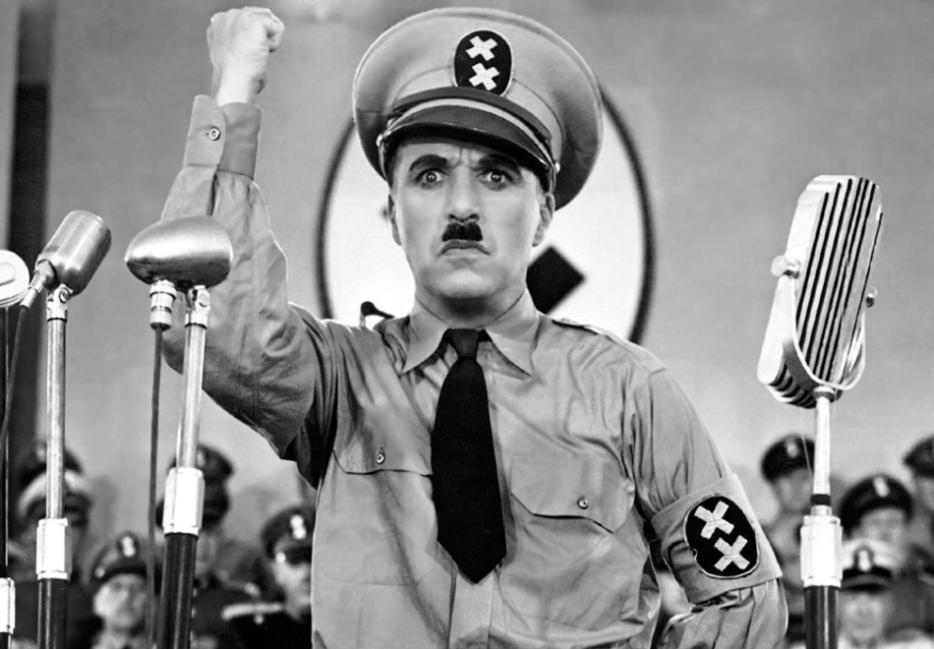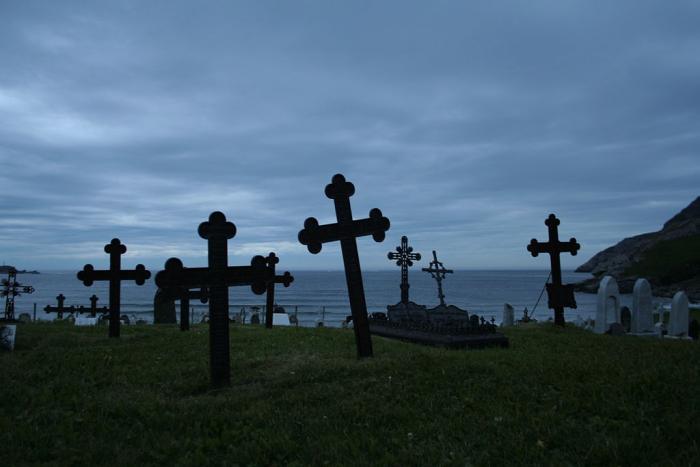In February of 1910, the British Royal Navy received the royal family of Abyssinia with all due ceremony aboard its leading battleship, the S.S. Dreadnaught. The next day the imperial force was humiliated when the African entourage was revealed to be a bunch of upper-class English aesthetes playing a prank. The troupe wore blackface and glued-on beards, and expressed approval by exclaiming “Bunga bunga!” The “Emperor” and his associates were given a full tour of the ship and serenaded with anthems by the official band.
The Dreadnaught Hoax was a coming-out party for the Bloomsbury Group, including young Virginia Stephen, later Virginia Woolf—ringleader Horace Cole had played a similar trick at Cambridge by posing as the visiting Sultan of Zanzibar. “Bunga bunga” became a laughable catchphrase in the U.K., but left an unfortunate legacy as—with variants like “unga bunga”—racist shorthand for any “primitive” or “tribal” language in pop culture, as in midcentury Bugs Bunny cartoons:
Less cheesily, think of the Count of Monte Cristo, any number of “prince and pauper” stories, or Woody Allen’s chronological chameleon Zelig. One of Allen’s models was Buster Keaton, whose many hapless-preppy silent gag flicks include 1922’s The Electric House: Keaton plays a graduate in botany mistaken for an electrical engineer and hired by a rich man to outfit his home with all the latest gadgets. Rather than confess, he goes ahead and wires up a series of surreal contraptions. They even might have worked, if not for those meddling kids the real electrical engineer, who discovers his subterfuge and sabotages the joint, to mayhem-bringing results.
On a similar note, in tribute to Jantjie this weekend I watched Carol Reed’s 1959 adaptation of Graham Greene’s Our Man in Havana. Alec Guinness stars as an amiable British vacuum-cleaner salesman in Cuba who gets roped into the Secret Service for the money and then fakes his intelligence reports, until they start to have grim real-world consequences. It is a gentler satire than Greene’s novel, but still quite a bold indictment of Cold War hidebound thinking and official hypocrisy, considering it was shot on location only months after the Cuban revolution. Seeing Guinness’s phony vacuum-cleaner-based drawings of supposed mega-bomb developments, it’s hard not to think of the fake intelligence about bio-weapon installations that helped justify the 2002 war on Iraq.
This is the most satisfying kind of tale of imposture: The intervention of the ordinary or eccentric figure mirrors back the corruption of elites and authorities. The masterwork of the form has to be Charlie Chaplin’s 1940 The Great Dictator, in which a Jewish barber is a dead ringer for a despot transparently modeled on Adolph Hitler, who speaks in a macaronic German that rhymes aesthetically with Jantjie’s physical gibberish. The barber takes the strongman’s place and changes the world with a poetic speech in favour of tolerance, peace and democracy. Chaplin clearly meant to sway then-neutral America into joining the war effort, though he was later reported to say he wouldn’t have poked fun at Hitler so light-heartedly if he’d been aware of the Nazi death camps.
A more spiritual change on the theme was rung by Jerzy Kosinski’s 1970 novel Being There, later adapted into Peter Sellers’ wonderfully lyrical final film. It introduced Chance the Gardener, a “God’s fool” kind of character whose empty-headed remarks are misinterpreted as pearls of policy wisdom by American businessmen and politicians, and becomes the object of a personality cult—which, in a twist, his transcendental simplicity (spoiler) turns out to merit.
But Jantjie does not present us with even that straightforward a morality tale. He undermined authority, but not in any way that’s easy to relish. Instead he is the sort of enigma that if contemplated long simply makes reality seem liquid, causes the air to quiver and walls to seem less solid: A party I was going to this weekend was cancelled at the last minute, and for hours after the call I kept having momentary flashes that the celebration, which was partly for my own birthday, was going on without me—not that my friends would double-cross me, but that the switch of plans might have been some kind of dream. That’s what thinking too much about Thamsanqa Jantjie can do to you.
In this way he’s more akin to an art project such as Los Angeles’s Museum of Jurassic Technology, which with its mix of genuine and falsified anthropology causes the viewer to question the validity of every other museum—a reminder that there is no such thing as “natural” history. (Do read hoax-specialist Lawrence Weschler’s fine book about it, Mr. Wilson’s Cabinet of Wonder.)
Or perhaps Iris Häussler’s controversial 2006 installation in Toronto, an entire house full of works and artifacts said to be the work of reclusive artist Joseph Wagenbach, for which Häussler claimed to be merely the archivist. When they learned Wagenbach never existed, experts and regular audience members alike railed they had been duped. But as Mark Kingwell later wrote, “There is no concern here for the visual puzzles of representation tricks of trompe l’oeil, nor even with the now familiar gesture of puncturing the art world itself, in its institutional forms, as a collective delusion of corporate approval. Offering a layered experience of engagement, disillusion, and confusion, it goes well beyond these, and sets up a work—a network, I want to say—of meaning whose reality lies neither in the house nor in the fiction. It is an example of what we might label haptic conceptual art: the art of ideas that functions by way of immersion, even ravishment.”
Ravishment, with its both deliriously tempting and unsettlingly invasive connotations, is how I want to describe the ultimate effect of Thamsanqa Jantjie. I hope that as a human being he gets the help he obviously needs, and that South African and other officials learn a lesson about being taken in. But I feel grateful for the event of Jantjie, and for all the fakes, frauds and charlatans who wittingly or unwittingly yank the tablecloth out from under settled social consensus, and make us tremble at who and what might be pulling the strings behind the curtain of existence, real and/or imagined. To them I say, with reckless impolitic: Cowabunga!
The News in Art appears every Monday.





